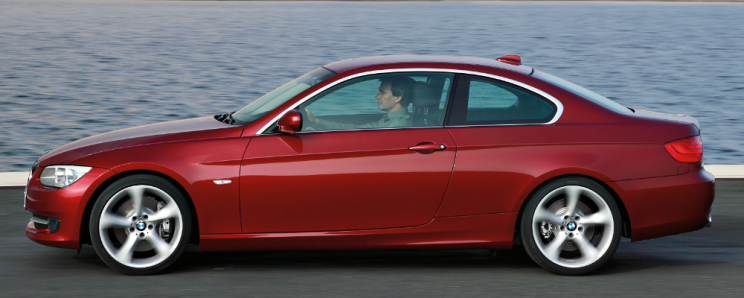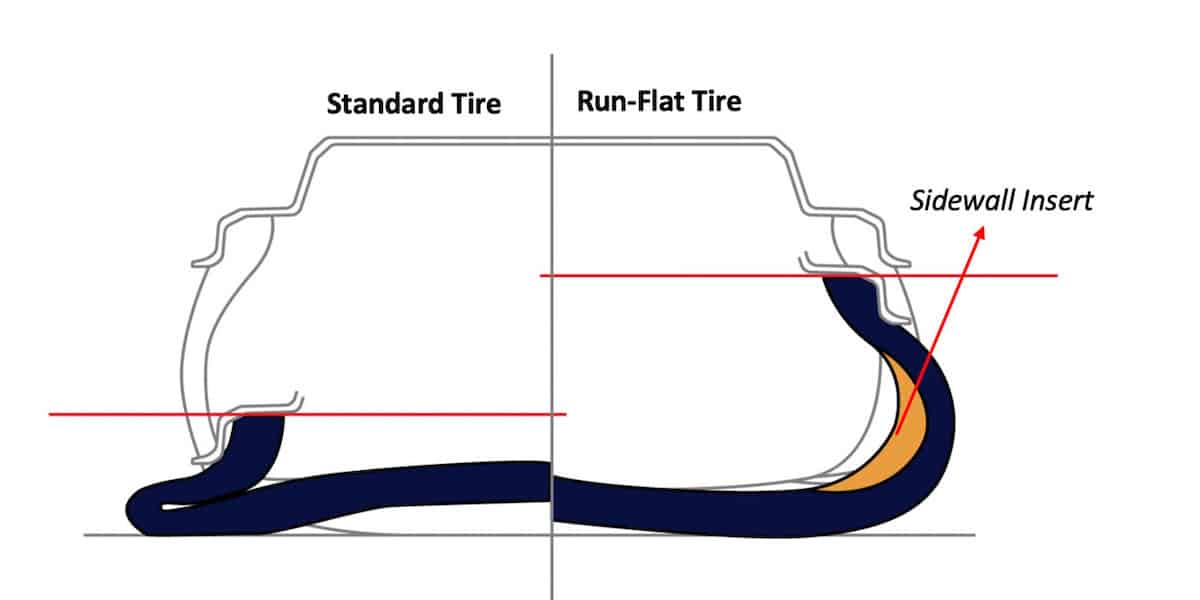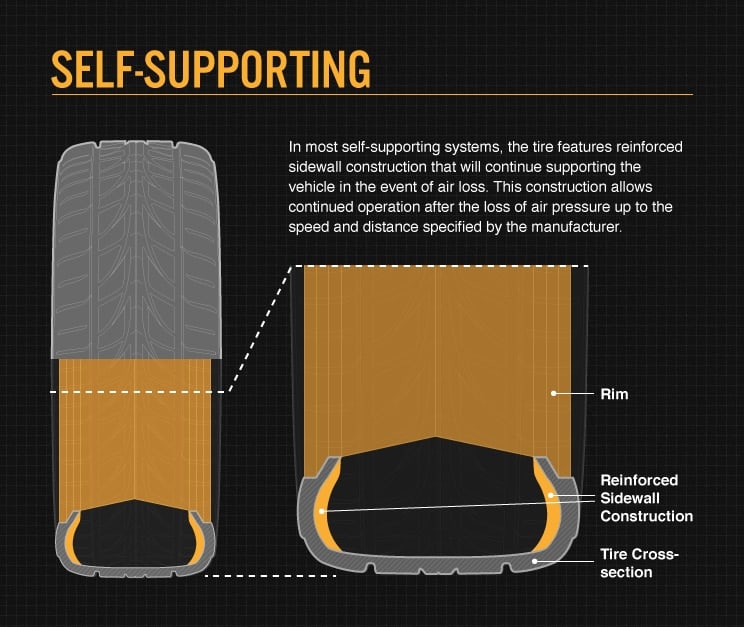
What are run flat tires?
Run flat tires feature steel-reinforced sidewalls which allow for a deflated tire to retain its shape without air. This design allows for drivability with reduced speed until replacement of the tire is performed by a shop. This is the origin of the name “Run Flat” meaning you can drive them on flat tires. For comparison, a traditional tire with zero air pressure will collapse completely and provide no support. As a result, the vehicle becomes inoperable and you are forced to replace the wheel on the spot or call a tow truck. See images below for further clarification.
What was the first BMW to use run flat tires?
The first BMW model to feature run flat tire (RFT) technology was the 2000 BMW E52 Z8.
Can you patch or plug run flat tires?
BMW does NOT recommend patching or plugging run flat tires. Once the tire is punctured, the integrity of the tire is compromised and may not safely perform its functions if the tire completely loses tire pressure. BMW dealerships will not even perform the work if the customer asks as they do not want to be held liable.
From personal experience: I have had a nail puncture a run flat tire on my M235i and plugged the tire using a standard plug kit. The tire held air and I was able to drive on it until I could get the tire replaced a week later. I did not drive over 50 miles per hour, however. I do not recommend this for a long term fix, but in a pinch, I have had success with this.
What is the distance I can drive on run flat tires with no air?
BMW states vehicles can drive up to 50 mph (80km/h) for up to 100 miles (160km).
What are the advantages of run flat tires?
BMW introduced run flat tires to push forward boundaries on safety, convenience and optimization of space in addition to the weight savings and increase in fuel efficiency. Below are the biggest advantages of using run flat tire technology.
➊ No dangerous roadside tire changes.
➋ No need for jacking equipment.
➌ The tire stays on the rim when completely flat.
➍ All Dynamic Stability Control functions remain fully functional with a deflated tire.
➎ Reduced weight which increases fuel economy.
➏ Increased trunk space.
➐ The tire pressure monitors will warn the driver there is a loss of pressure.
What are the disadvantages of run flat tires?
➊ More expensive than traditional tires.
➋ Claimed road noise on some tire designs.
➌ Rougher ride due to stiffer side walls.
➍ No spare if you damage your rim.
➎ Limited by speed and range, a full-size spare restores all drivability.
➏ Reduced performance claims due to different rubber compounds.
➐ Claimed shortened life span
What’s the bottom line?
Run flat tire technology is here to stay. BMW and Mercedes make up over 50% of the market share for run flat tires as of 2019. With increasing pushes in safety, weight savings and fuel efficiency the full size spare is going to die out. As run flat tire technology begins to become more wide spread, prices will come down. Tire manufacturers will also spend more research and development in making the rubber compounds better which will increase performance.
For those die hard fans who do not want to give in, there is always the option to run traditional tires on your vehicle. You run the risk of being completely stranded if you do not carry a full size spare in your trunk which no longer has room for the tire. Thus, it will take up valuable trunk space. It may be worth it in some cases.
Learn how tire pressure monitor sensors work!
Learn how tire pressure monitor sensors work by clicking HERE

Source: yokohama tires

Source: Bridgestone tires


